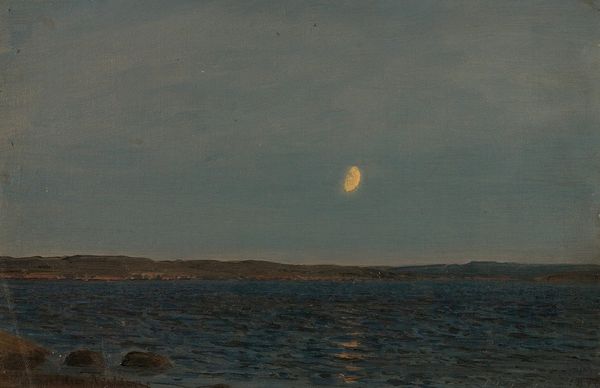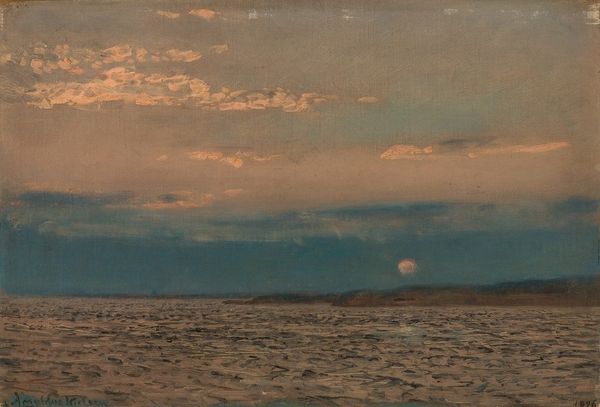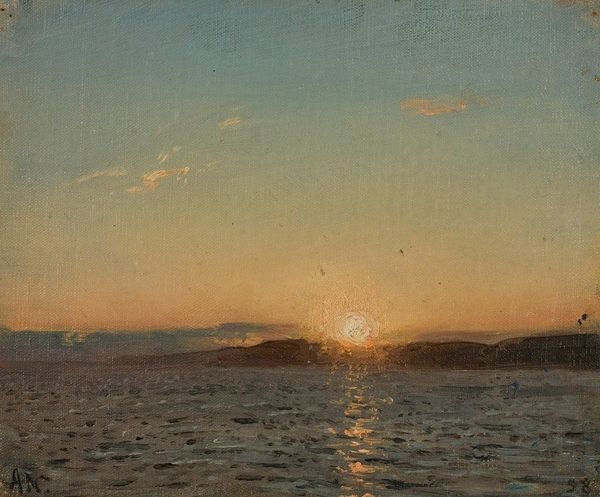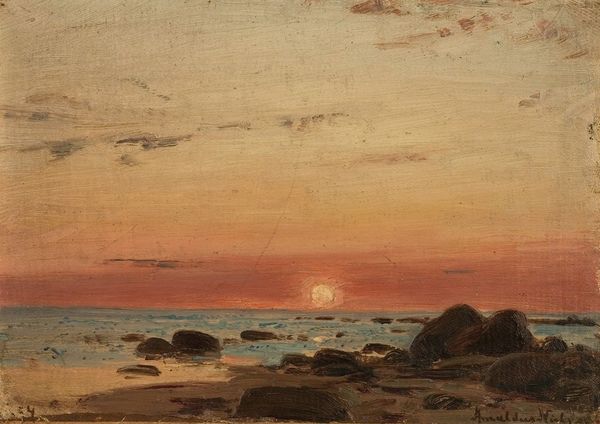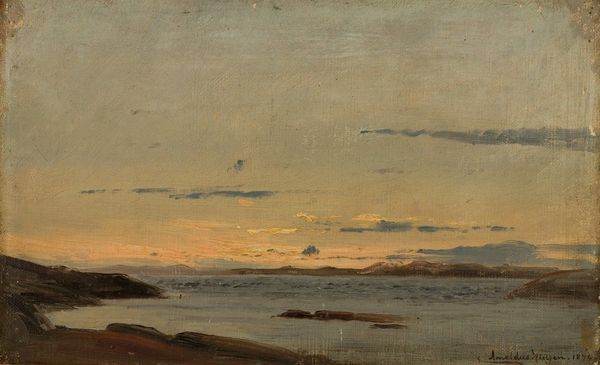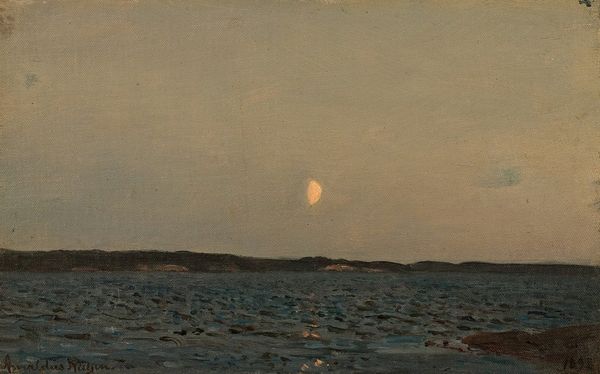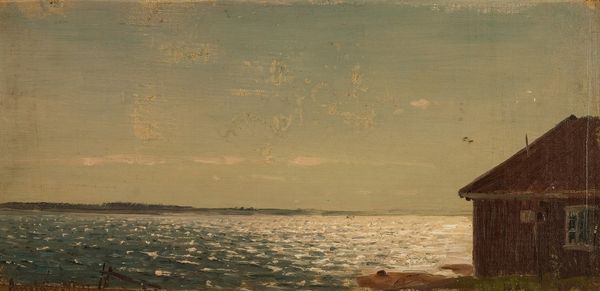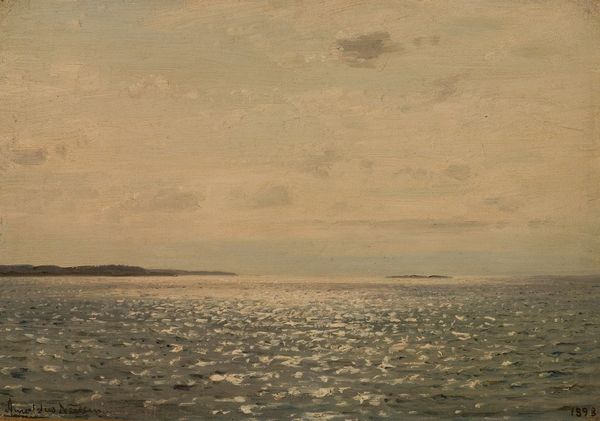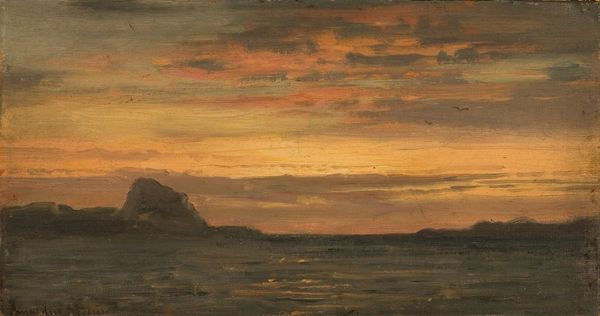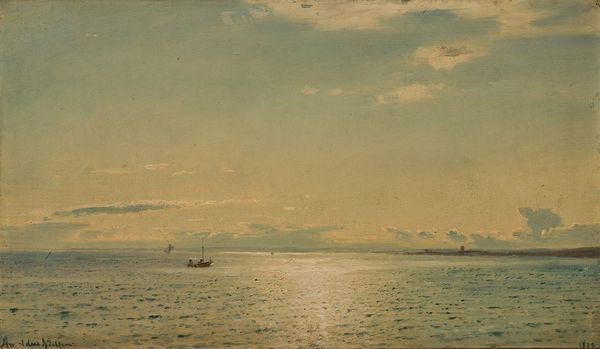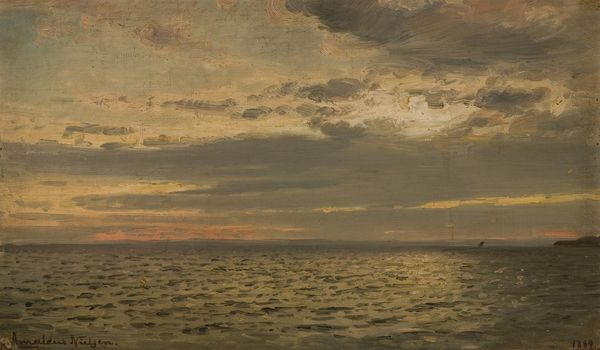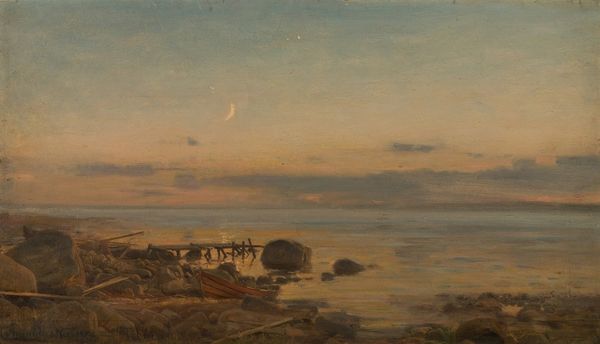
Copyright: Public Domain: Artvee
Editor: So, this is Amaldus Nielsen's *Augustmåne*, painted in 1886, using oil on canvas. It's a pretty simple scene—water, land, and a moon—but something about the muted tones makes it feel quite heavy and still. What do you see in it? Curator: I see the moon, of course. Not just as a celestial body, but as an ancient symbol. Think about its presence in mythology, folklore. Cultures have long imbued the moon with notions of cyclical time, feminine energy, and the subconscious. In Nielsen's *Augustmåne*, its dim light seems to cast a spell, inviting introspection. Editor: Introspection, definitely. I was thinking about how that line of light reflects from the moon. Is that typical for seascapes of the time, or is there more to that one visual choice? Curator: It's not unusual for seascapes to depict the moon's reflection. However, note its character here. The artist employs a broken, flickering reflection, disrupted like a broken promise, not a clear path. Consider it a symbol of humanity’s fractured relationship with nature. Or perhaps it reflects the fleeting nature of a moment. Editor: That's interesting. So, rather than just a literal depiction of light, it's a kind of melancholic emblem? Curator: Precisely! Nielsen doesn't simply show us a scene; he evokes a feeling, laden with symbols and archetypes. It bridges the visual and emotional worlds. Editor: I'm starting to see how even a seemingly simple image can hold layers of meaning. I guess there's so much more than just what is immediately apparent. Curator: Indeed. By examining the enduring power of symbols, we find a dialogue between ourselves and our shared history, a connection we can revisit anytime.
Comments
No comments
Be the first to comment and join the conversation on the ultimate creative platform.
